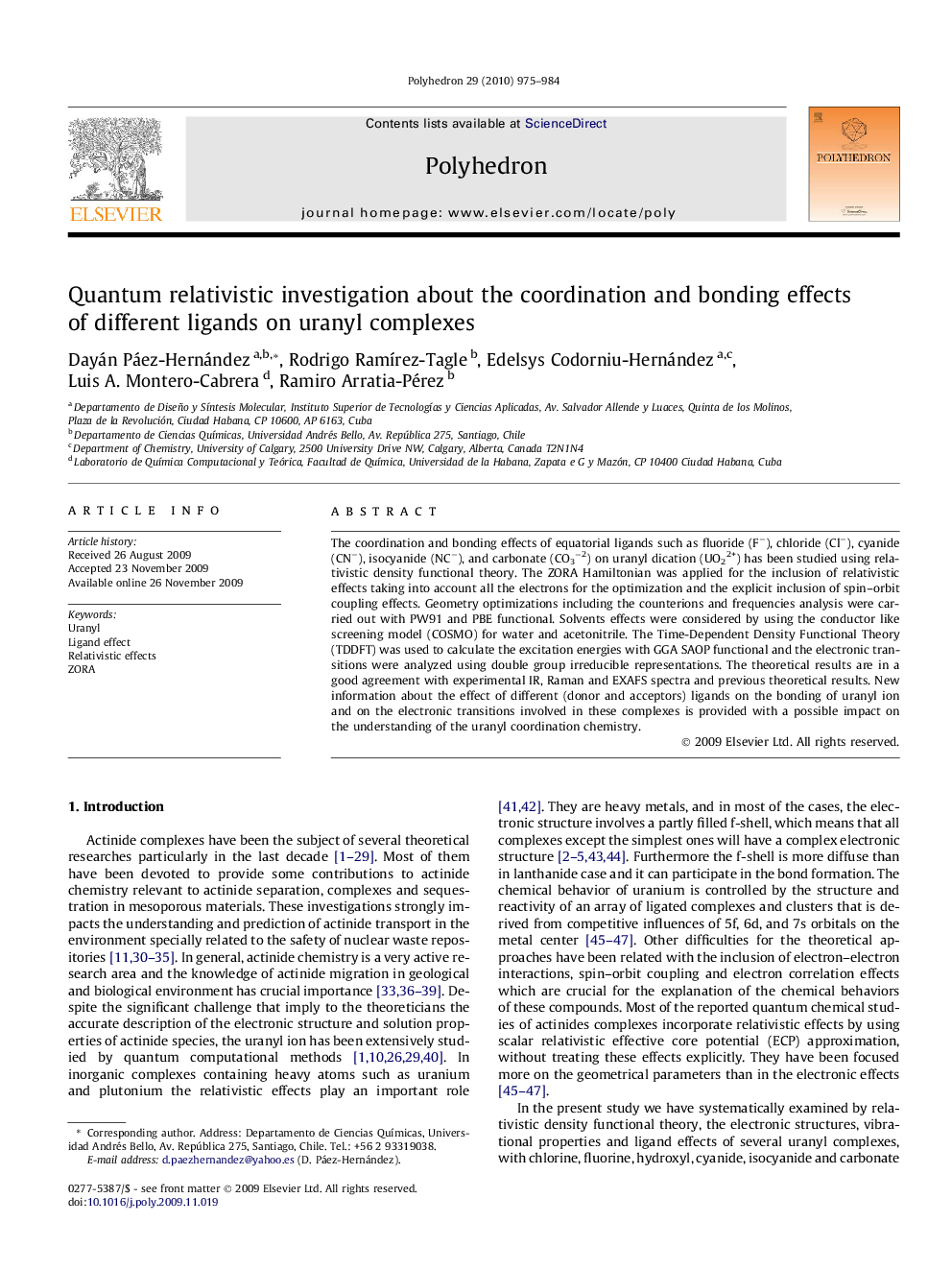| Article ID | Journal | Published Year | Pages | File Type |
|---|---|---|---|---|
| 1339308 | Polyhedron | 2010 | 10 Pages |
The coordination and bonding effects of equatorial ligands such as fluoride (F−), chloride (Cl−), cyanide (CN−), isocyanide (NC−), and carbonate (CO3−2) on uranyl dication (UO22+) has been studied using relativistic density functional theory. The ZORA Hamiltonian was applied for the inclusion of relativistic effects taking into account all the electrons for the optimization and the explicit inclusion of spin–orbit coupling effects. Geometry optimizations including the counterions and frequencies analysis were carried out with PW91 and PBE functional. Solvents effects were considered by using the conductor like screening model (COSMO) for water and acetonitrile. The Time-Dependent Density Functional Theory (TDDFT) was used to calculate the excitation energies with GGA SAOP functional and the electronic transitions were analyzed using double group irreducible representations. The theoretical results are in a good agreement with experimental IR, Raman and EXAFS spectra and previous theoretical results. New information about the effect of different (donor and acceptors) ligands on the bonding of uranyl ion and on the electronic transitions involved in these complexes is provided with a possible impact on the understanding of the uranyl coordination chemistry.
Graphical abstractThe coordination and bonding effects of equatorial ligands on uranyl dication (UO22+) has been studied using relativistic density functional theory. New information about the effect of different ligands bonding uranyl ion and the electronic transitions involved in these complexes is provided with a possible impact on the understanding of the uranyl coordination chemistry.Figure optionsDownload full-size imageDownload as PowerPoint slide
